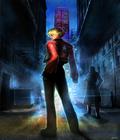A genre usually reserved for home consoles and handhelds, the Japanese style of strategy-RPG has seen some recent action on the PC. Most of the games are ports of older titles from the PlayStation family, but the representation is appreciated nonetheless. In a few weeks, we'll see Children of Zodiarcs, a game that breaks the genre mold in several different ways. For one, it comes from Canada and is published by Square Enix under its Collective umbrella that supports indie titles. It also happens to be released day and date with its console counterpart, and the gameplay mechanics make this feel distinct.
The story has a number of beats you'd expect from anything influenced by Japanese storytelling methods. You play as a band of thieves, mostly comprised of kids from the slums who want to rob the rich and kill anyone in their way. The specific targets of wealth are the Zodiarcs, relics from an ancient time that grant the user power if they know how to wield it. As in many RPGs, the characters are engaging. There's a caring brute who acts as the caretaker of the kids, and there's a fan of the thief who's gotten herself in a sticky situation. The concerns of the two main children give the story some depth in small snippets without being preachy.
The basic mechanics of any strategy RPG are present in Children of Zodiarcs. Each character takes turns moving and attacking around the board, with all of the actions restricted by square areas in a grid shape. You can move any character in any order, and you can go back to any step until you execute your action, which happens immediately instead of at the end of the turn. In order to avoid sneak attacks, every character can face in one of the four cardinal directions. Don't expect to execute combo moves if you have two characters next to one another. It is all rather simple, but two hooks add some unexpected depth.
The first big change is that almost all of your actions are governed by your card deck. Beyond guarding, you have no basic actions of your own, so your cards can tell you if you have the chance to attack, defend or cast spells. You gain cards as you level up, and you can edit your deck, so you can have a good balance of healing, defensive and action cards while making sure they vary in action area size and whether you can attack a group. What you can't do is have your hand fill up with cards automatically, so getting a bad hand or coming in empty means you'll use a turn to draw a few cards.
The second major change is the involvement of dice. Using any of your cards, both offensively or defensively, will force you to roll a number of dice depending on the card drawn. Most of the time, the rolls will end up with something positive. That can include activating the card's inherent bonus, drawing another card, increasing your attack or defenses for a counter-attack, or healing yourself. Depending on your own chosen dice set or curses inflicted on you by the enemy, you also have the chance to roll dice detrimental to yourself, such as lowering stats or increased damage. You can edit the dice sets you carry, but you can't edit the individual dice.
The new additions are beneficial for both those with experience in the genre and those who are looking to get into it. Even with an expertly built deck, the unpredictability of what you'll get can determine your next moves while simultaneously forcing you to think on your feet in case you get cards that you don't need. Meanwhile, that same randomness in the dice does a fine job at surprising you with bonuses and giving a plausible explanation for not getting consistent hits for every attack. The result is a game that offers its own form of complications while keeping things easy to understand.
So far, the presentation is quite good. Though the game lacks voices, the rest of the sound package comes in strong thanks to the score, which emphasizes rousing battle melodies without going overboard. Graphically, the environments look nice and have some intricate details, and the color palette makes things pop. The character designs in the 2D cut scenes are drawn in a way that makes it feel like a native Square Enix game, while the 3D models come very close to matching that style. The characters also animate well at all times, but seeing ragdoll effects when an enemy dies is both pretty cool and superfluous for the genre.
Based on the battle system alone, Children of Zodiarcs provides an interesting spin to the strategy RPG. Though you aren't expecting crazy combo action or complicated teamwork when taking out enemies, the use of dice and card mechanics adds enough of a difference to make things feel complex while remaining accessible. It'll be interesting to see how the final product fares when the game releases.
More articles about Children of Zodiarcs



































